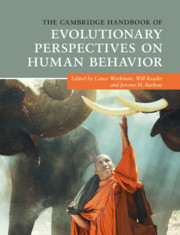Book contents
- The Cambridge Handbook of Evolutionary Perspectives on Human Behavior
- The Cambridge Handbook of Evolutionary Perspectives on Human Behavior
- Copyright page
- Dedication
- Contents
- Figures
- Tables
- Contributors
- Preface
- Acknowledgments
- Part I The Comparative Approach
- Part II Sociocultural Anthropology and Evolution
- Part III Evolution and Neuroscience
- Part IV Group Living
- Part V Evolution and Cognition
- Part VI Evolution and Development
- Part VII Sexual Selection and Human Sex Differences
- Part VIII Abnormal Behavior and Evolutionary Psychopathology
- Part IX Applying Evolutionary Principles
- 36 A Bridge Too Far?
- 37 The Evolution of Personality
- 38 Applying Evolutionary Principles to Criminality
- 39 Substitute Parenting
- 40 Historians and the Evolutionary Approach to Human Behavior
- 41 The Psychology of Extraterrestrials
- Part X Evolution and the Media
- Index
- References
36 - A Bridge Too Far?
Evolutionary Psychology and the Solution of Social Problems
from Part IX - Applying Evolutionary Principles
Published online by Cambridge University Press: 02 March 2020
- The Cambridge Handbook of Evolutionary Perspectives on Human Behavior
- The Cambridge Handbook of Evolutionary Perspectives on Human Behavior
- Copyright page
- Dedication
- Contents
- Figures
- Tables
- Contributors
- Preface
- Acknowledgments
- Part I The Comparative Approach
- Part II Sociocultural Anthropology and Evolution
- Part III Evolution and Neuroscience
- Part IV Group Living
- Part V Evolution and Cognition
- Part VI Evolution and Development
- Part VII Sexual Selection and Human Sex Differences
- Part VIII Abnormal Behavior and Evolutionary Psychopathology
- Part IX Applying Evolutionary Principles
- 36 A Bridge Too Far?
- 37 The Evolution of Personality
- 38 Applying Evolutionary Principles to Criminality
- 39 Substitute Parenting
- 40 Historians and the Evolutionary Approach to Human Behavior
- 41 The Psychology of Extraterrestrials
- Part X Evolution and the Media
- Index
- References
Summary
The theme for this chapter as formulated by the editors was: “Can evolutionary psychology be used to solve social problems?” For the sake of simplicity, I use here a broad definition of evolutionary psychology as the evolutionary approach to human behavior, including approaches that have often been set apart, such as human sociobiology and human behavioral ecology (Laland & Brown, 2011). Although the question of the applicability of evolutionary thinking has occupied me for years and although I have applied such thinking to a variety of social problems, including occupational burnout, jealousy, and depression, I found it a real challenge to write a chapter on this issue. In fact, as I will argue, my answer to this question is not unequivocally positive. Instead, I will argue that evolutionary psychology does not provide clear solutions to all kinds of social problems.
- Type
- Chapter
- Information
- Publisher: Cambridge University PressPrint publication year: 2020



